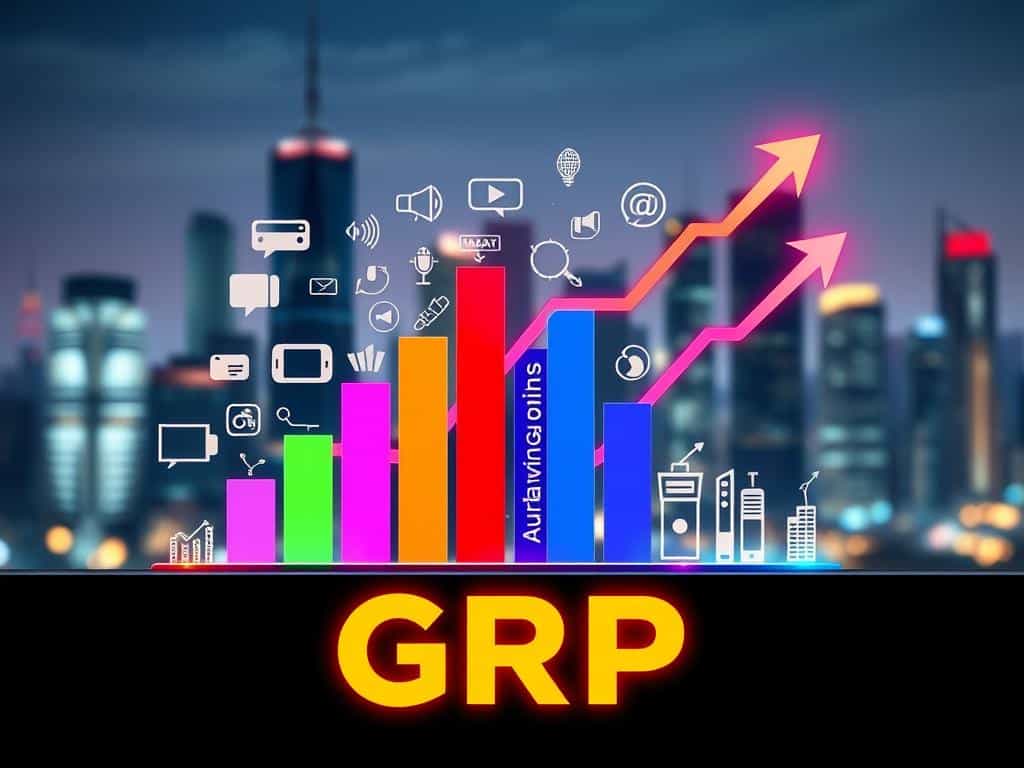Advertising plays a crucial role in connecting small businesses with new customers and driving sales. Understanding small business marketing costs is essential for creating an effective marketing strategy. The U.S. Small Business Administration suggests that, on average, businesses should spend about 7-8% of their revenue on advertising. This advertising budget can vary significantly by industry, with B2C product companies allocating around 9.6% and service businesses around 11.8% of their revenue to marketing. For instance, a small business generating $100,000 in annual revenue and dedicating 8% to marketing would have an $8,000 budget.
According to a BDC survey in 2019, Canadian small businesses have an average annual marketing budget slightly exceeding $30,000. Small businesses with 20-49 employees tend to have marketing budgets approximately twice the average, while companies with 50+ employees allocate over $100,000 annually. It’s crucial for small businesses to establish a marketing budget based on the potential return on investment. Focusing on cost-effective advertising strategies, such as social media and content marketing, can optimize marketing spend.
Digital advertising spending saw a 12.2% year-over-year increase in 2020, making it a dominant choice for small businesses due to its broad reach potential. Prioritizing social media advertising, local search optimization, email marketing, and referral marketing can be particularly useful. Constantly evaluating marketing channel performance and adjusting budgets based on performance metrics is vital for maximizing ROI in a competitive landscape.
The internet accounted for 51% of the total media ad spend in 2021, with businesses spending an estimated $378 billion on online advertising. On average, small businesses spend between $2,500 to $12,000 monthly advertising online, with over 37% spending less than $10,000 annually. Approximately 20% of small businesses pay $10,001 to $50,000 on advertising annually, while 7% spend more than $1 million yearly.
The average monthly expenditure for small businesses using Google to advertise online is between $9,000 and $10,000. For Facebook ads, the average cost per click is around $1, with an average cost per action of $18. The average cost per thousand impressions (CPM) on Instagram has moved close to the $10 threshold. Establishing a flexible marketing budget that can be adjusted based on industry benchmarks and business needs is key to standing out from competitors and achieving successful marketing outcomes.
Understanding Small Business Marketing Budgets
Effective marketing budget planning is essential for small businesses striving to remain competitive. On average, businesses allocate approximately 1.08% of their revenue to advertising, though this figure can vary significantly depending on industry benchmarks.

Average Spending by Small Businesses
The Small Business Administration (SBA) reports that small businesses typically spend around 2% to 5% of their revenue on marketing. For a business generating $100,000 annually, this translates to a marketing spend of about $2,000 to $5,000. Business-to-consumer (B2C) companies, especially product companies, may allocate a higher percentage; on average, about 9.6% of their revenue, whereas B2C service companies might spend up to 11.8%.
| Business Type | Average Marketing Budget (% of Revenue) |
|---|---|
| General Small Businesses | 2-5% |
| B2C Product Companies | 9.6% |
| B2C Service Companies | 11.8% |
Industry-Specific Budgeting Considerations
When planning a marketing budget, it’s imperative to account for industry-specific needs and norms. Certain sectors may necessitate higher marketing spends to remain competitive or to reach a more advertisement-reliant market. For instance, industries with high competition or those heavily reliant on consumer perception may need to increase their marketing budget planning.
Consider the example of a small jewelry business that allocates 8% of its quarterly revenue to marketing. If the previous quarter’s sales were $25,000, the marketing budget would be $2,000. This budget could be broken down as follows:
| Expense Type | Budget Allocation | Amount |
|---|---|---|
| Online Presence | 30% | $600 |
| Local Sponsorships | 20% | $400 |
| Fishing Campaign | 15% | $300 |
| Digital Advertising | 20% | $400 |
| Print Collateral | 15% | $300 |
Understanding these industry-specific budgeting considerations not only aids in strategic marketing spend but also helps track returns on investment more effectively. Regular evaluation and adjustment of the marketing budget based on industry benchmarks can lead to better resource allocation and improved marketing outcomes.
How to Determine Your Small Business Marketing Budget
Determining a marketing budget for your small business is an essential step toward achieving your long-term goals. This process involves establishing clear target marketing goals, evaluating current marketing performance, and understanding your target audience.
Setting Clear Marketing Goals
To start with your marketing budget determination, it is imperative to set clear marketing goals. These goals could range from increasing online sales by a specific percentage to enhancing foot traffic in your brick-and-mortar store. By defining your target marketing goals, you can align your budget accordingly. For instance, if your goal is to elevate your online presence, you might allocate a significant portion of your budget to digital marketing efforts such as social media, content marketing, and SEO.
Assessing Your Current Marketing Efforts
Next, assessing your existing marketing performance is vital. This may involve reevaluating your current strategies and channels based on their performance or considering local market events for new opportunities. Utilizing tools such as PPC Signal can aid in this process by providing insights into optimizing your campaigns. Regularly reviewing and adjusting your marketing performance assessment ensures that your budget is spent wisely and yields the best possible returns. Learn more about effective marketing budget strategies here.

Identifying Your Target Audience
Understanding your target audience is equally crucial in the marketing budget determination process. Knowing the habits, preferences, and demographics of your potential customers helps tailor your budget towards the most effective platforms and strategies. For example, if your audience predominantly spends time on social media, investing in social media marketing would be prudent. According to the U.S. Small Business Administration, small businesses with annual revenues of less than $5 million should allocate 7-8% of their revenues to marketing costs to reach and engage their audience effectively.
| Expense Category | Annual Spend Range |
|---|---|
| Website Development & Maintenance | $1,000 – $6,600 |
| Content Marketing | $9,100 |
| Social Media Marketing | $55,000 |
| SEO Services | $6,000 – $60,000 |
| Events & Brand Awareness | $1,000 – $250,000 |
| Tools & Software | $2,500 – $150,000 |
| Marketing & Sales Staff Salaries | $70,000 – $300,000 |
| Graphics & Branding | $500 – $10,000 |
By considering these factors wisely, you can develop a robust marketing budget that caters to your business’s unique needs and goals.
Cost of Different Advertising Channels
When considering the cost of different marketing channels, small businesses need to evaluate a range of options that fit their budget and goals. From free methods to high-end campaigns, understanding the costs involved can help in making strategic decisions.
Free and Low-Cost Marketing Channels
Small businesses often start with free or low-cost options to gain online visibility. Social media profiles on Facebook, Instagram, and Twitter can be created at no cost, and updating these profiles regularly can foster engagement. Utilizing SEO techniques, such as keyword-rich content and optimized metadata, can also drive organic traffic to your website without significant investment. Listings on Google My Business and Yelp are another impactful, cost-effective approach. These platforms enable your business to appear in local searches and map results, enhancing discoverability at minimal costs.
Mid-Range Advertising Options
For a more substantial impact, mid-range investments can be considered. Leveraging social media advertising through platforms like Facebook and Instagram offers targeted campaigns that range from $1.72 per click to higher CPM (cost per thousand impressions) rates, averaging around $10 on Facebook and $5 on Instagram. Blending these campaigns with SEO-optimized content ensures a broader reach. Monthly expenditures for SEO services typically fall between $2500 and $7500. Additionally, local sponsorships and influencer collaborations offer ways to engage with specific audiences within your community or niche market.
High-End Marketing Investments
High-end investments often yield more comprehensive results. Engaging in Google Ads campaigns, where the average cost per click on the search network is $2.32 and on the Display Network is around $0.58, can significantly enhance visibility. Google Ads’ average monthly cost for small businesses ranges from $9000 to $10000. These figures demonstrate the scalability of Google Ads, providing a flexible budget range for maximizing ROI. Moreover, investing in professional photography, video production, and extensive email marketing campaigns can also elevate your digital marketing strategy, with managed email marketing services costing between $51 and $1000 per month.
To sum up, small businesses should diversify their marketing strategies across various channels. Balancing free options with mid-range and high-end investments helps in creating a cohesive marketing approach that aligns with your business objectives and budget constraints.
How Much Is Advertising For A Small Business
Defining the exact cost of advertising for a small business hinges on several factors, such as the size and scope of the business, the industry, target audience demographics, and chosen advertising channels. According to the BDC survey, annual marketing budgets can average over $30,000, with larger businesses typically having a higher allocation for marketing efforts. Despite these averages, effective advertising need not be exorbitantly expensive. Businesses can select from a broad range of platforms, from free options like social media to significant investments in digital or traditional ad spaces.
The average Google Ads CPC across industries is estimated to be $1-2 on the Google Search Network, while the Google Display Network sees an average CPC of under $1. Notably, attorneys and legal services face the highest average cost per click on Google Ads and Microsoft Advertising at $9.21, whereas local real estate businesses benefit from a lower average CPC at $1.55. Career and employment businesses grapple with the highest average cost per lead at $132.95, contrasting with the automotive repair sector, which enjoys a lower cost per lead of $21.12.
For small businesses, spending on Google Ads can range from $500 to $10,000 per month. Additionally, hiring a Google Ads expert typically incurs costs between $15 and $40 per hour. Important supplementary expenses include optimization tools starting at around $30 per month and landing page development with web developers beginning at $89 per month. Paid advertising tools like Semrush add further expenditure with prices starting at $129.95. Social media advertising on platforms such as Facebook, Instagram, and LinkedIn presents affordable alternatives, with average CPCs varying based on the platform.
It is advisable for small businesses to allocate a significant portion of their overall budget to online advertising to effectively market their products or services. This is particularly crucial for new firms entering the market. Analyzing key metrics and tracking campaign performance are essential steps in measuring the impact and success of advertising efforts. To ensure a well-rounded strategy, small businesses can benefit from outsourcing certain advertising responsibilities to third-party experts, balancing costs while maintaining campaign quality.
Below is a table summarizing average CPC and cost per lead (CPL) across different industries to illustrate the variability in advertising costs:
| Industry | Average CPC | Average CPL |
|---|---|---|
| Attorneys and Legal Services | $9.21 | N/A |
| Local Real Estate | $1.55 | N/A |
| Career and Employment | N/A | $132.95 |
| Automotive Repair, Services, and Parts | N/A | $21.12 |
Conclusion
A well-planned marketing budget acts as a compass, guiding small businesses toward achieving their sales and growth objectives. As your small business navigates the complexities of creating an effective marketing strategy, understanding typical budget allocations is critical. Initial startup branding costs can range from $1,000 to $5,000, while ongoing monthly advertising expenditures may start at $1,000. Allocating 5% to 10% of sales revenue to advertising can help sustain current revenues, whereas investing up to 20% or more may rapid growth.
Setting clear marketing goals, assessing current efforts, and identifying your target audience are essential steps. Knowing the cost of different advertising channels—ranging from traditional methods like TV, radio, and billboards to digital platforms such as Google Ads and social media—empowers you to make informed choices. For instance, TV advertising costs can range from $250 to $15,000 per 30-second spot, while social media ad costs vary significantly based on platform and ad type.
Strategic planning and budget optimization based on performance metrics are key. Monitoring customer acquisition costs (CAC), which have been observed to reduce from $250 to $110 per customer as marketing matures, is crucial. Evaluating CAC annually and striving to lower it while maintaining brand quality can ultimately enhance your marketing strategy. By focusing on effective branding and advertising, your small business can maximize its advertising impact and explore new horizons in your market.








